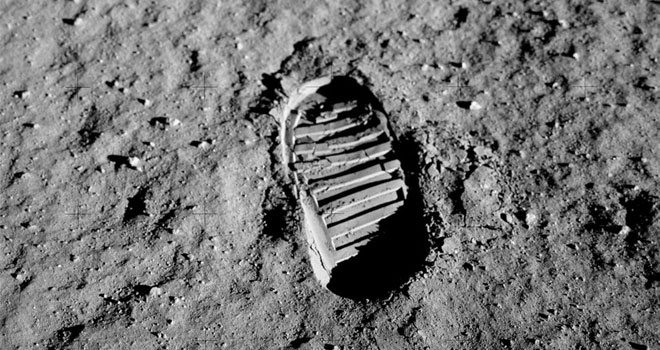44 years ago today, Neil Armstrong, Edwin “Buzz” Aldrin Jr., and Michael Collins climbed into a small capsule on top of a Saturn V rocket at Kennedy Space Center, and, using less computing power than you carry in your pocket today, flew to the moon.

The Eagle Lands
On July 20, four days and more than 240,000 miles later, Armstrong and Aldrin landed the Eagle (the code name for the Lunar Module) on the surface of the moon, about five miles from the planned landing site in the Sea of Tranquility. Collins continued to orbit the moon on Columbia (the code name for the Command Module).
Armstrong took his historic first steps on the moon (and made his famous speech) on July 21, only a few hours after the Eagle had touched down on the lunar surface. Armstrong and Aldrin then spent about two-and-a-half hours outside the Eagle, taking pictures, conducting experiments, and gathering almost 50 pounds of lunar samples to bring back for further study.

Return to Earth
Then, almost 22 hours after landing, the Eagle blasted off from the lunar surface and docked with the Columbia, which had continued to orbit the moon 25 times. Armstrong and Aldrin left a few things behind on the moon, including scientific equipment, an American flag, and a plaque commemorating their visit that read:
“Here men from the planet Earth first set foot on the moon, July 1969 A.D. We came in peace for all mankind.”
After docking with Columbia in lunar orbit, the three astronauts flew the Service Module/Command Module back to Earth, eventually splashing down in the Pacific Ocean, just 13 miles from recovery ship U.S.S. Hornet.

From launch to splashdown, the mission lasted only eight days, but established a decades-long legacy of exploration and bravery that has continued to drive mankind to reach for the stars.




